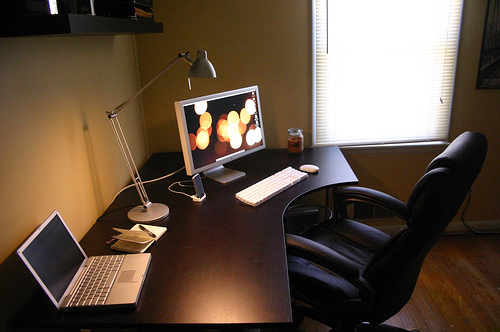Skills for a better workplace - get in the Go Zone
Author: Mark McKeon (Mischief, Motivation, Attitude) | Date: 31 Aug 2015
Take home message
- Organise times for intensive activity, moderate decision making and total mental switch-off.
Introduction
Many people have peaks and troughs in their personal productivity. They sometimes get on a roll and make multiple achievements in one day, week or month. At other times they may feel as their next achievement may never come.
They are sometimes efficient with their time, personal organisation and farming or administration skills, while at other times they lose time, procrastinate or operate with low efficiency. Many people have lost the ability to concentrate, focus and then relax. The Go Zone is about rebuilding and refreshing these key skills.
Go Zone

The Go Zone maximises the productive hours we have each day.
The Go Zone eliminates distractions, errors and repeats. The Go Zone makes sure that we get it right the first time.
The Go Zone incorporates the idea of our own 'Ideal Performance State', where we are physically and mentally prepared to achieve a state of peak performance in any environment.

Figure 2: The Go Zone work space.
Key features of the Go Zone
- 120 minute periods of total focus on the most important things for your farming- related business.
- A prioritised 'to do' list that is compiled before you enter your Go Zone.
- Set, predetermined and regular time frames. We do not wait until we feel like it.
- Repeated habit four or five days each week.
- Non-negotiable target that is totally within your control. This target is to keep working through your list until the buzzer sounds.
- No distractions and no excuses: Clear area, no drops-ins, no social calls, no food (water is good), no stops. A repeatable habit of total dedication to the task.
- Start and finish with two minutes of deep breathing.
- A token that sits in your pocket on your person to remind yourself and others that you are in the Go Zone.
- A buzzer or alarm that signals the end of your Go Zone.
Every Go Zone finishes with a short review and debrief. Coach yourself. What did I do well, what could I do better?
Slow Zone

The Slow Zone is the normal or standard of ethics and enthusiasm displayed by most people.
The Slow Zone is more than going through the motions, but less than being totally committed to the task and totally determined to achieve a preset goal.

Figure 4: A Slow Zone work space.
Key features of the Slow Zone
Standard method of operation for most people.
- A modest level of motivation and output.
- Completion of routine tasks. The things that still need to be done, but they are less important.
- Awareness of the limited productivity of the Slow Zone.
- Productive, but non stressful.
- No big decisions are made here.
- Preparation for the Go Zone. Compiling the prioritised 'to do' list for your next Go Zone.
- The transitional state or buffer between the Go Zone and the No Zone.
- The state where our physiology returns to neutral or baseline levels. Adrenaline dissipates.
Slow Zones can extend for multiple hours because anything other than a Go Zone, No Zone or sleep is categorised as Slow Zone.
No Zone

The No Zone incorporates the personal boundaries we create to separate work from the other components of our lives.
There are times when the best use of our time is to not be at work, to not think about work and to have a total break so that we are refreshed and ready for our work commitment to work.
This is demanding and even more important when people work from home.

Figure 6: Personal time or the No Zone.
Key features of the No Zone
- No work and no thinking about work.
- Whatever you do in your No Zone must distract you or involve you so much that you are no longer thinking about work.
- Regular scheduled periods of total recovery. It is like pressing CTRL/ALT/DEL on your computer, or restoring its factory settings. It is a crucial part of your preparation for your next Go Zone.
- Complete mental and physical break from the business.
- Do something different. Have boundaries that you respect and implement. Your target is eight hours per week of No Zone. Two, two-hour blocks or four one-hour blocks from Monday to Friday, and one four-hour block on each weekend. This means four No Zone hours during the week and four No Zone hours on the weekend.
- Try your hardest not to feel guilty about being in the No Zone. No Zones are a crucial part of your preparation for your next Go Zone.
- No Zones cannot be compromised. A walk along the beach accompanied by your phone (just in case a client calls) is not a No Zone, it is de facto Slow Zone.
- Each Go Zone hour is ideally matched by a No Zone hour.
- Your target is eight hours per week of No Zone. Two, two-hour blocks or four one-hour blocks from Monday to Friday, as well as one four-hour block on each weekend. This means four No Zone hours during the week and four No Zone hours on the weekend.
- You feel better for completing your No Zone. If you feel more stressed or too tired, then it wasn't a No Zone at all.
Contact details
Mark McKeon
Mischief, Motivation, Attitude
mark@mmateam.com.au
Was this page helpful?
YOUR FEEDBACK
